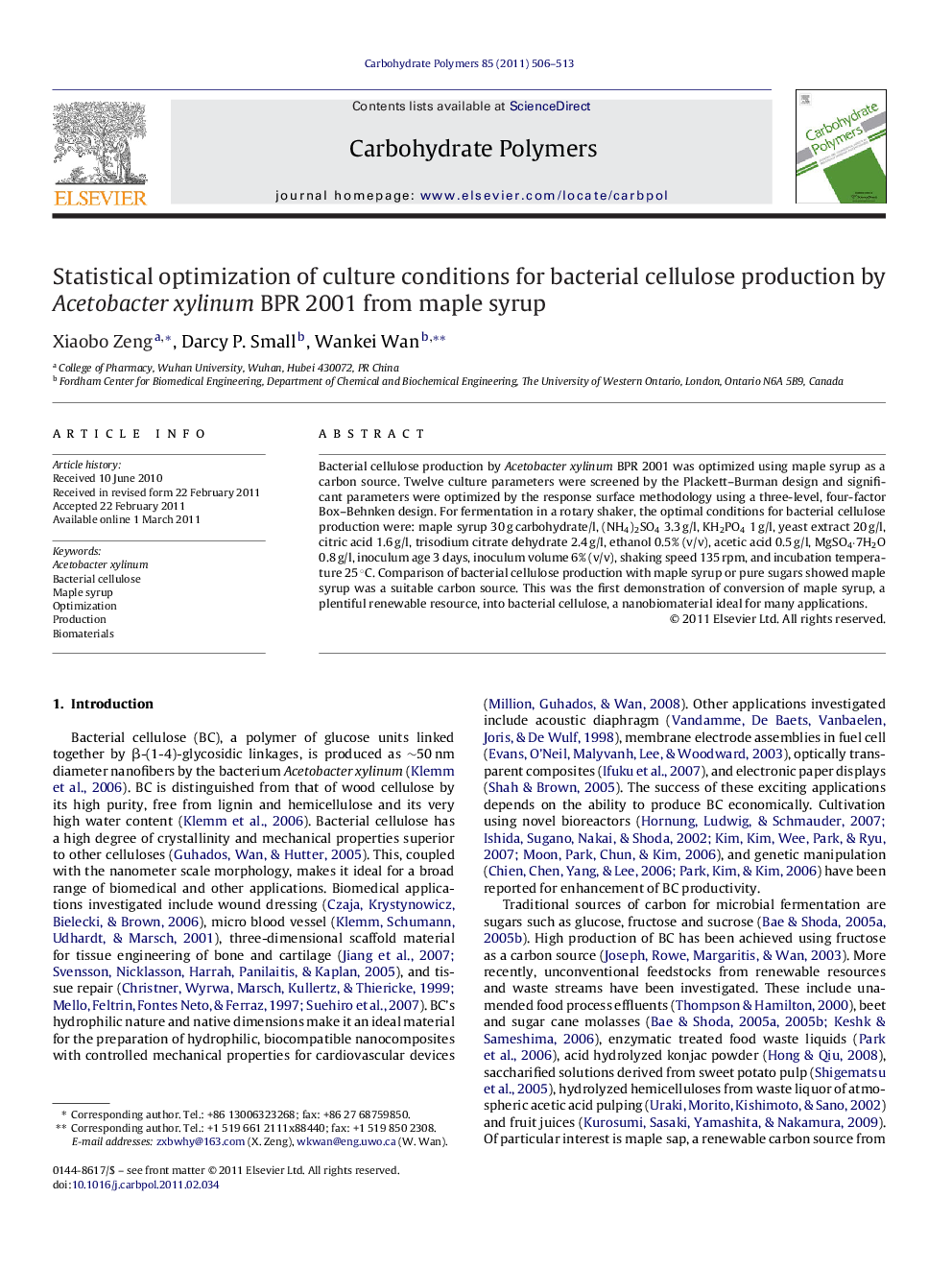| Article ID | Journal | Published Year | Pages | File Type |
|---|---|---|---|---|
| 10602312 | Carbohydrate Polymers | 2011 | 8 Pages |
Abstract
Bacterial cellulose production by Acetobacter xylinum BPR 2001 was optimized using maple syrup as a carbon source. Twelve culture parameters were screened by the Plackett-Burman design and significant parameters were optimized by the response surface methodology using a three-level, four-factor Box-Behnken design. For fermentation in a rotary shaker, the optimal conditions for bacterial cellulose production were: maple syrup 30 g carbohydrate/l, (NH4)2SO4 3.3 g/l, KH2PO4 1 g/l, yeast extract 20 g/l, citric acid 1.6 g/l, trisodium citrate dehydrate 2.4 g/l, ethanol 0.5% (v/v), acetic acid 0.5 g/l, MgSO4·7H2O 0.8 g/l, inoculum age 3 days, inoculum volume 6% (v/v), shaking speed 135 rpm, and incubation temperature 25 °C. Comparison of bacterial cellulose production with maple syrup or pure sugars showed maple syrup was a suitable carbon source. This was the first demonstration of conversion of maple syrup, a plentiful renewable resource, into bacterial cellulose, a nanobiomaterial ideal for many applications.
Related Topics
Physical Sciences and Engineering
Chemistry
Organic Chemistry
Authors
Xiaobo Zeng, Darcy P. Small, Wankei Wan,
